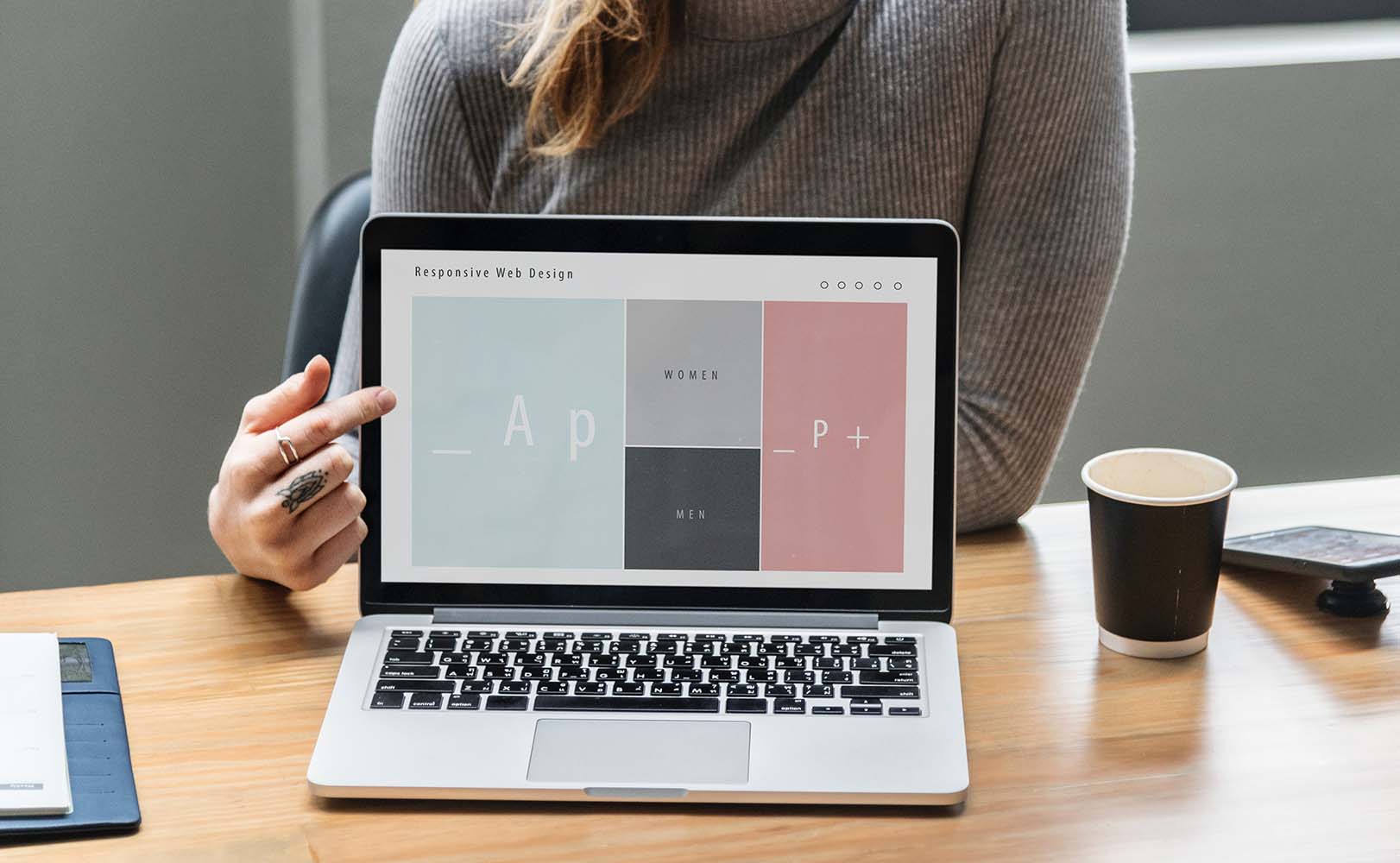The new field always brings along new challenges. Newcomers come across new terminology which can get really confusing at times.
It is more like unraveling a mystery of jargons. Glossaries and online searches can come to aid but sometimes the language is so dense that it can’t be easily understood.
UX too has some twisted terms to it, which even labels the design process. Here in this post we have compiled a glossary of common terms that you will often encounter and thus, should be added to your UX vocabulary-
3 Click Rule
It is a theory followed by website navigation, adopted in the early 2000s, which says that a user of website navigation should be able to locate any information in no more than three mouse clicks else they would abandon the page out of frustration. It is now considered as a foolish concept as usability studies defy the theory’s relation to user satisfaction or success rates and instead connect these to information scent.
Adaptive Web Design
Just like responsive web design, it is a concept that creates sites to enable optimal viewing and interaction experience on different screen and devices. It differs from RWD on the grounds that it is less fluid and provides few width versions of the design based on the viewport size. It can employ server-side techniques to ascertain viewport size before going on to rendering HTML. The designer gets to have more control over images and typography. Thus, this is the best way to retrofit fixed width websites to that of mobile devices.
5 Second Test
Going by its name, the 5-second test must give users a single content page for a quick 5 seconds. The motive is to collect a participant’s first impressions and analyze the screen’s clarity and brevity with the help of simple questions like ‘what is the most crucial information on the page?’ or ‘what will you do to achieve your goal on the screen?’ The procedure is same to that of a standard usability test and may at times be combined with one.
What Is a 5 Second Test?
A/B Testing
It is a method in which you pick up two versions of your product and show them side by side with a group of users so as to assess which one is liked more by them. This type of testing comes into play once a neat working model of the product like prototype or MVP has been framed and you have commenced with user testing. It is also known by the name of split testing.
Engaged Time
Google Analytics permits website owners to see and study what users like and respond to. By recording engaged time on-site i.e. the amount of time that a user devotes to a specific page, you can deduce what users want from your site. Pages with higher engaged times are the users' favorites.
It is seen that an engaged user is generally a happy one and will respond to your product or service in an expected manner like making a purchase, signing up for an event or clicking a link. Users with rising engaged times have greater chances of returning to your site again in the near future as they found the experience worth their time.
So, what is considered a good average time on page? The number depends tremendously on content and the depth of page. Identify your top five pages; landing page along with four other pages that can help you to accomplish your goal and observe how the time on page and bounce rates change.
Experience Architecture
A mélange of multiple designs and user experience procedures, which has information architecture, interaction design and experience design in it, forms experience architecture. Versatile experience architecture is the one that creates a strong relationship with users. IA includes stressing and revolving around a particular information model or concept. It makes a plan and list of behaviors or actions corresponding to a product and its users. Experience design reflects on the aspect that how a design will adapt to multiple environments in the design process. Even though experience architecture is generally considered in terms of UX design for the purpose of digital projects, the concept is applicable everywhere.
What & How To Define The UX Architect?
Card Sorting
Card sorting is a technique that is used to contribute to a design or analyze the information architecture of a site. In a typical card sorting session, participants arrange topics into types that they find sensible. They are also required to name these groups. To perform a card sort, you can utilize cards, pieces of paper or an online card sorting tool.
How To Do UX Card Sorting?
Analytics
Analytics is a wide term that includes a lot of tools, methods, and processes just for the purpose of obtaining useful information or typical behavior patterns from data.
Eyetracking
It is a research technique that is gaining popularity owing to the vast reach of technology. Eyetracking utilizes tools to evaluate where users look first and afterward when they view a website or come in contact with other visual data. This data puts light on visuals that capture most of the attention of the users.
How to do Eyeball Tracking?
Conversion Rate
The conversion rate is very important as it determines the percentage of visitors those who complete the desired transaction online. In e-commerce, conversion marketing involves changing site visitors into paying customers. The task of enhancing the conversion rate is known as conversion rate optimization.
What Is Conversion Rate?
End Users
These are the audience who use a website or an app or those who act as the participants or subjects of research studies.
Fishbone Diagram
A fishbone diagram is the one that is used to recognize the cause and effect relationships between factors of a given situation. It consists of a head that defines a problem and bones along the spine which denotes factors and the types of factors. The fishbone helps to bring forth the troublesome causes for a particular problem.
Geolocation Indicator
Courtesy GPS tracking, geolocation indicators can inform users the location in physical proximity to an object. These are of great use on mobile applications and for mapping services. The location-based design is surging high in popularity. The reason is that it customizes everything according to the users’ needs and make sure that they relate to it.
KPIs
Key Performance Indicators look after the usability of a website or digital design. KPIs study the present usability patterns, trends that were prevailing over a period of time and makes comparisons with competitors. In the end, we get data on the interaction of the users with a site and if or not the design has turned out in the way that the designer or developer had thought of.
Participatory Design
Participatory design, initially called co-operative design, is a methodology in design that tries to actively involve all stakeholders, be it employees, partners, customers or users in the design flow. The motive is to be sure that the result meets their needs duly.
Persona
It means having a representative user created on the grounds of available data and user interviews. Even though the personal details of the persona may not be true, the information that is taken into account to create the user type is.
Observational Study
An observational study is done with the help of actual users to evaluate their relationship to that of your design. Study the facial expressions of the users. Look at their body language. Try to judge the impact that users have when they come in contact with your site. Observational studies may be costly to conduct but are a keyhole to the connection that people have with your website or app. It is super for decoding how users interact with something but do not provide feedback on their behaviors as such.
Usability Test
Usability testing helps you to analyze a site by including actual users in the interactions. This is generally done in a lab setting but not in every case. Usability testing is good as it reveals whether or not the participants have finished the given tasks successfully. It tells how long it takes to wind up the allotted tasks. You can know the level of satisfaction that the participants have with your website or product. Recognize the changes that are required to enhance user performance and happiness. Finally, you can evaluate the performance to ascertain whether it meets your usability objectives or not.
How to Measure Usability & UX?
Web 2.0
Web 2.0 is stated by any valuable website or page that is created for the advantage of the user. The term has been used for quite some time now and explains the transition from early static websites to user interfaces. Join Web 2.0 and HTML5 and you will get access to the most refined and user-friendly interfaces present on the web. HTML 5 was conceived to give cross-platform powerful experiences that have everything from animations to music and video.
Widget
Widgets are widely used across various platforms and websites. It is simply an on-screen element that is used by the users for interactions. Earlier almost all websites had a traffic counter. That is what a widget is. Some examples of widgets are sliders, calendar tools, buttons, and contact forms.
Prototype
It is a demo version of an app or product that can be taken for the purpose of testing, showing it to the other departments and stakeholders and even bug checking. It does not include full functionality and may employ stand-in images or fake user profiles to explain how some features work.
Low/High Fidelity
Low/high fidelity comes into use while describing either wireframes or prototypes. Low fidelity is very simple, inclined more on functionality and is fast to make. High-fidelity versions consist of a lot of visual design features, show off interactions and functionality, and generally pass on more info to the client or other departments. Most projects either employ both or prefer high-fidelity.
Low Fidelity VS High Fidelity
MVP (Minimum Viable Product)
Don't mix it up with a prototype. This is that adaptation of the product that has a minimum amount of features so that it can be transported over to the test users or stakeholders. This opens up to a more in-depth testing of hypotheses without having to create the entire project.
What is MVP (Minimum Viable Product) and How to plan it?
Pain Points
These are the issues or the troubles that use faces a problem or an existing product that the UX team has been given to solve.
UCD (User Centred Design)
UCD have a chain of processes that stress on the end user during the entire period of development and design. This is attained by continuous testing, researching and checking features within the product.
What is User-Centered Design (UCD) Process?
UI Elements
User Interface Elements are like virtual items utilized to make an interface like buttons, search fields, message boxes, dropdown lists and many others. They are generally present in library sets so that all the elements are compatible with each other. There are some user interface designers that like to create their own elements.
User Flows
This refers to the path that a user covers to perform a task on your website or app. Different users take up different paths and different tasks to accomplish, but each one should be made to flow smoothly and rationally. Advance planning helps UX designers to judge where a user might lose track or where can logic failures occur.
User Journeys
Don’t jumble it up with task user flows; these are like larger stories that tell not only about the user using the product but also the motivation behind using that product and how they felt about the product after accomplishing the desired goals.
What is User Persona and User Flows?
Wireframe
Wireframes are like a skeleton of your app or product with an absence of images, content and interactive elements. It is somewhat a blueprint telling where each asset will be present on the screen. Also, it makes easier to organize elements and redesign the site or app without wasting too much time on it.
Final Word
Even though it may not be possible to learn about all the lingo, still it is crucial to match up with the advancement in design and web. A good understanding of terminology can aid designers and developers to determine what techniques can be used in their working projects. So, are you on design terms, UX pro?



